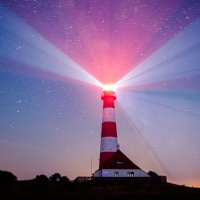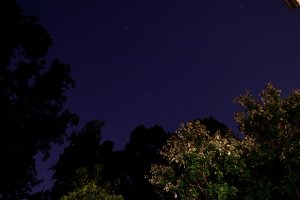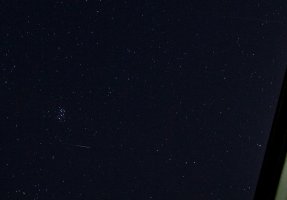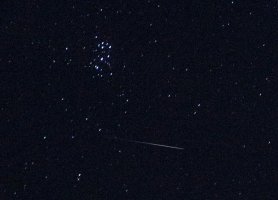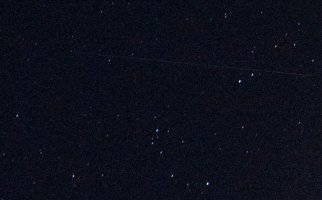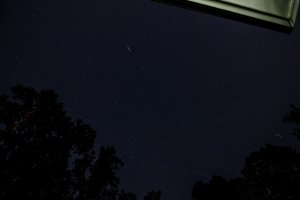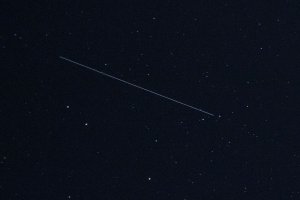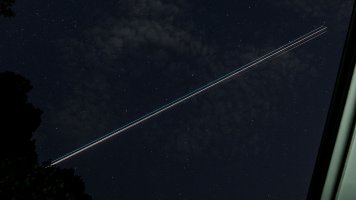Well, it is unidentified and probably a flying object anyway.
The Perseid meteor shower is supposed to peak late Wednesday night/early Thursday morning. Since the sky was clear overhead and to the northeast tonight, I thought it a good time to run a test in case I had good weather later. So I set my camera on a tripod on my deck and pointed it mostly up and toward the northeast. The trees behind the house don't give me a whole lot of open sky. After a couple test shots that looked overexposed, I set the camera to take a picture every 30 seconds, starting at 10pm and going until 11:13 EDT. Local solar time is an hour and 29 minutes earlier right now, so the sky continued to get darker during the shoot, and some dimmer stars showed up as astronomical twilight faded.
I zoomed the 16–35mm f/4 lens to 20mm. I manually focused to ∞. Manual settings were 10 sec., f/6.3, and ISO 1600. The camera is a 26.2 MP Canon 6D2.
I thought I might even luck into a meteor. I did get a few planes, since a major airport is 25 miles south of me. In a couple shots I thought I might have caught a meteor, but on further examination, I think it might have been a small plane. For one thing, it showed up on two consecutive frames, and I don't think a meteor would hang around long enough for that. The first picture is the UFO. The second is obviously a commercial aircraft with its blinking lights. Both are 100% crops. The only adjustment I did in ACR was to nudge up clarity enough for the trails to be clearer.
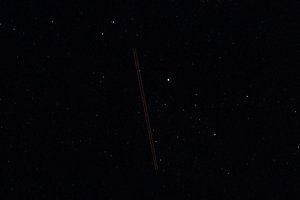
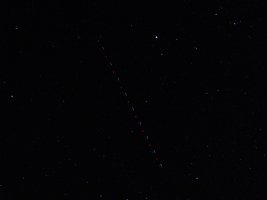
The Perseid meteor shower is supposed to peak late Wednesday night/early Thursday morning. Since the sky was clear overhead and to the northeast tonight, I thought it a good time to run a test in case I had good weather later. So I set my camera on a tripod on my deck and pointed it mostly up and toward the northeast. The trees behind the house don't give me a whole lot of open sky. After a couple test shots that looked overexposed, I set the camera to take a picture every 30 seconds, starting at 10pm and going until 11:13 EDT. Local solar time is an hour and 29 minutes earlier right now, so the sky continued to get darker during the shoot, and some dimmer stars showed up as astronomical twilight faded.
I zoomed the 16–35mm f/4 lens to 20mm. I manually focused to ∞. Manual settings were 10 sec., f/6.3, and ISO 1600. The camera is a 26.2 MP Canon 6D2.
I thought I might even luck into a meteor. I did get a few planes, since a major airport is 25 miles south of me. In a couple shots I thought I might have caught a meteor, but on further examination, I think it might have been a small plane. For one thing, it showed up on two consecutive frames, and I don't think a meteor would hang around long enough for that. The first picture is the UFO. The second is obviously a commercial aircraft with its blinking lights. Both are 100% crops. The only adjustment I did in ACR was to nudge up clarity enough for the trails to be clearer.


Last edited:


